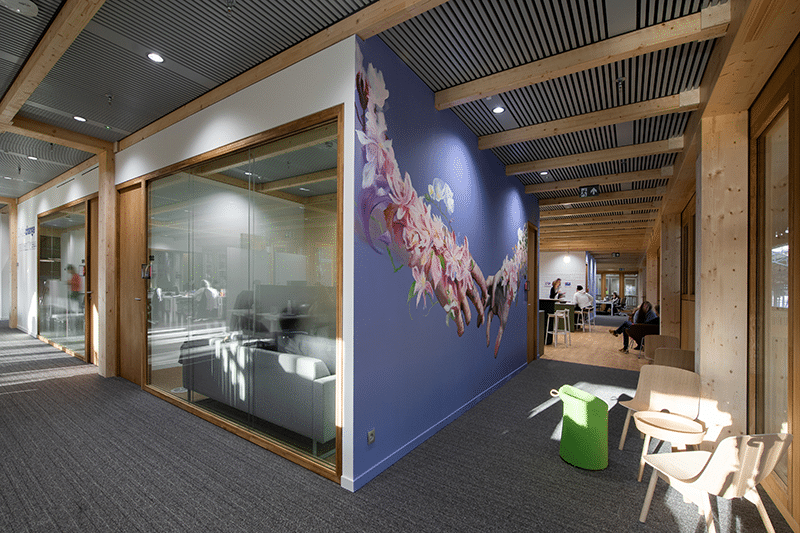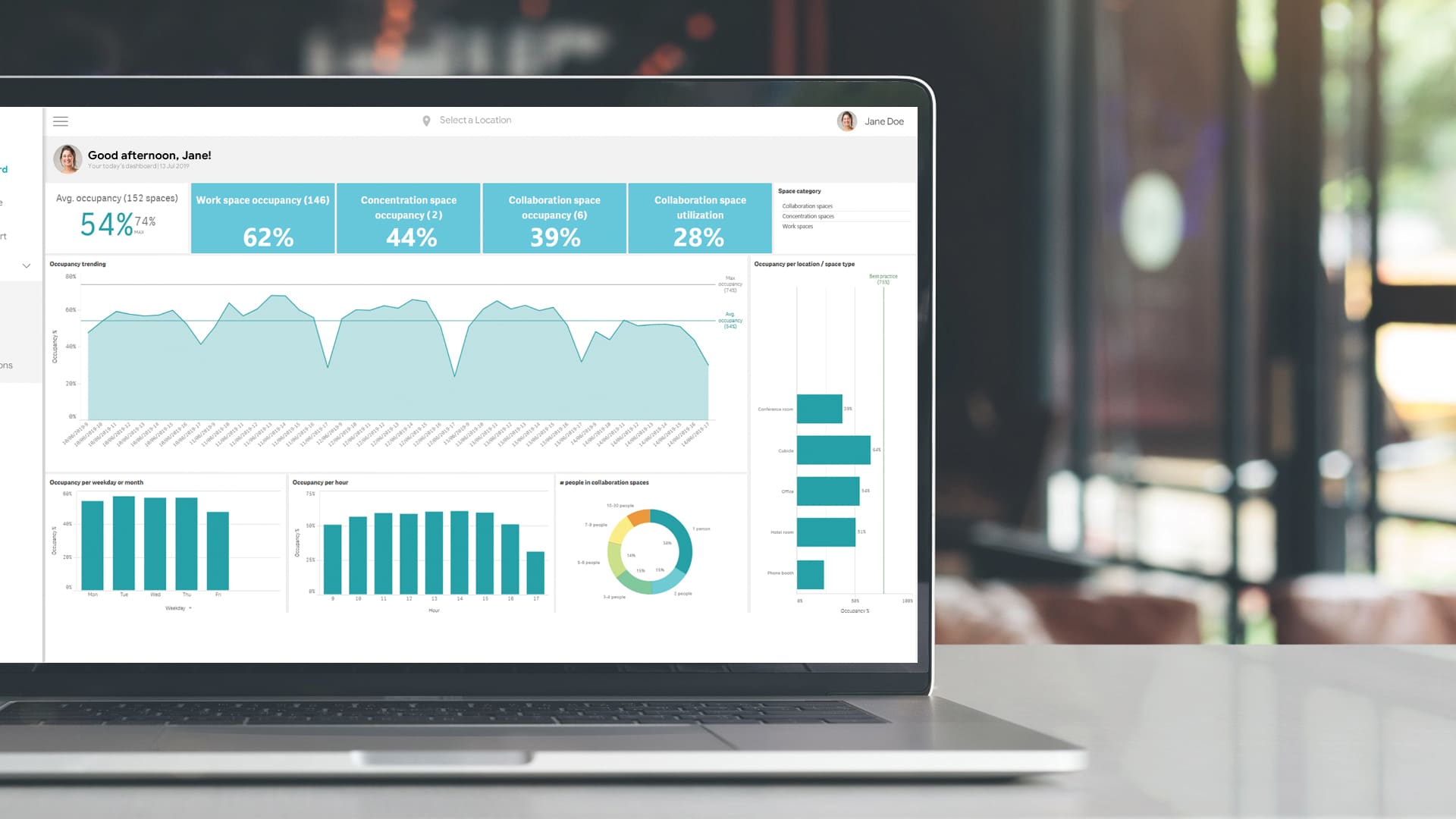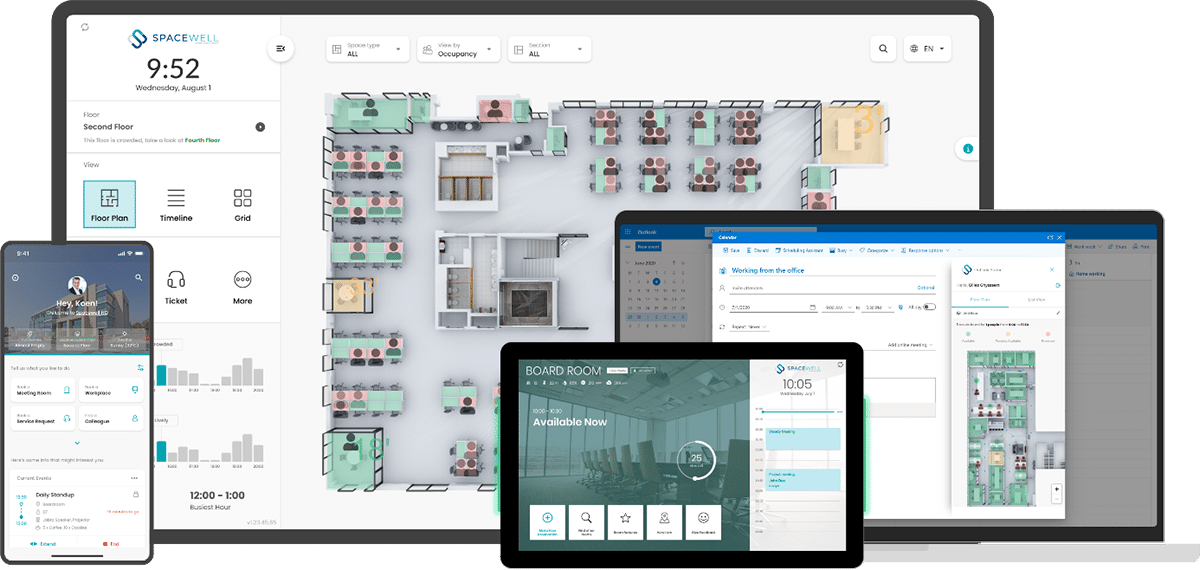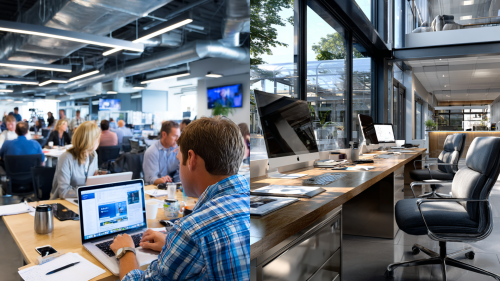Have you recently transitioned to a flex office with shared desks and workspaces? Or are you planning to? Then you may want to benefit from software that is designed for managing such an environment.
The post-pandemic workplace
The changes in working patterns that were already underway before the pandemic have accelerated sharply during the crisis. Companies had to adapt quickly, without necessarily having the time to adopt flex office software.
However, in the long term, the use of a tool of this type will prove to be essential. Because it enables you to respond effectively to various challenges that come with the new distributed structure of work.
Flex office and new ways of working
The concept of the flex office is not new. But the pandemic has turbo-charged its popularity.
Flex office: definition
The flex office, also called hybrid workplace, enables employees to work either remotely or face-to-face. It also allows them to occupy workstations and spaces flexibly, based on their activities and personal preferences.
Flexible use of the workplace makes a lot of sense. Especially now that employees are rarely all present in the office at the same time. This is due to a post-Covid increase in telecommuting (WFH), part-time work and increased mobility. And it looks line this trend will continue.
Consequently, the flex office reflects the evolution of society at large, and of the working world in particular. This also means that organizations now need to offer a range of different spaces to employees. These typically include meeting and huddle rooms, quiet zones, relaxation or lounge areas, soundproof office phone booths, pods and private spaces.
Read also: Hoteling, Hot-Desking, Flexible Seating, and the Hybrid Office
The challenges of the hybrid office
The main challenge of the flex office is to meet the needs and expectations of employees while providing benefits to the company. In other words, the objective is to provide pleasant workspaces that promote productivity while reducing the costs associated with them (rent, charges, maintenance, etc.).

Image courtesy of Accenture Brussels
With the growth of remote work, the purpose of the office is shifting. While spaces for focused work are still needed, employees especially want enjoyable spaces for in-person interaction and collaboration when they go to the office.
Meeting these demands is challenging, as it is not easy to determine how much of each type of space is needed. And whether utilization is changing over time. The best way, if not the only way, to do this is to turn to space monitoring & management technology.

Read also: Embracing Flexibility: Technology to Support Hybrid Workplaces
Flex office software: the perfect tool for hybrid work
Why invest in flex office software?
Investing in technology tools to manage offices that are less and less occupied may seem contradictory. Yet, it makes a lot of business sense. It will enable you to:
- Know how much space can be freed up to save money (rent, energy, services)
- Configure the space in the best possible way
- Offer optimal hybrid working conditions to employees occupying the spaces
To achieve this, the best way is to equip yourself with a flex office software application.
Such software allows you to collect the essential data to reach these goals. Centralized data from room reservations, for example, or detailed sensor data on the occupancy rate of each space and desk.
Read also: Flexible Office or Flex Office: Which Solutions Are Available?
A major trend
More and more companies are using digital tools designed for the flexible office. This allows employees to see where they can sit and which colleagues they will be next to. It enables managers to know where their teams are and who is coming to the office or not. Finally, it is a way for HR to manage the life of the company according to where everyone is. The flex office application is also used to book a meeting room or to privatize a collaborative space.

Many professional services firms, financial institutions, logistics companies, and public sector organizations have already adopted an IoT-connected workplace solution. Accenture uses it to optimize the flexible workplace, AXA to enable new ways of working, and PostNord to improve space efficiency and building occupancy.
The advantages of flex office software for business
Manage the workspace according to your needs
To begin with, flex office software makes it easy to see occupancy patterns and identify employees’ preferred work areas. This type of software typically connects to the IoT so that you can leverage information captured by workplace sensors. Thanks to utilization data collected directly by a workplace app or through sensors, you can ensure that the workplace is fit for purpose. You gain insight into workplace usage and can adapt the spaces to the needs and preferences of their occupants, thus promoting their well-being and engagement.
Improve employee productivity and engagement
This software is a powerful tool for creating a pleasant and productive work environment for employees by providing them with spaces that are adapted to their tasks and needs. People’s performance and motivation can thus be significantly improved.
Reduce real estate costs
By analyzing and visualizing the data in dashboards (Watch an explainer video), flex office software allows companies to better understand how the workplace is used. Based on these insights, they can optimize workspaces and reduce their surface area and associated expenses. Real estate costs can then be limited to what is strictly necessary, by getting rid of superfluous space.
Read also: What are the key benefits of workspace management software?
Manage equipment more easily and efficiently
Beyond the spaces themselves, a workplace platform allows monitoring of all equipment (ventilation, heating, assets, security, etc.). It provides real-time visibility of their operating status and a complete inventory. It. is also possible to assign equipment to specific spaces or users.
Enable intelligent services
Finally, software such as Spacewell Workplace Management allows for the implementation of intelligent services, both in the maintenance and upkeep of equipment and in services to occupants. For example, a room that has not been used throughout the day doesn’t need to be cleaned by maintenance staff, which helps reduce operating costs.
With the emergence and rapid development of new ways of working, companies cannot continue to manage their spaces as if nothing had changed. They need to adapt to the new context and new habits of their employees. This is not going to work with yesterday’s tools and mindsets. To be able to offer pleasant and efficient offices, it is essential to adopt the new tools created to meet new needs, and therefore to choose a connected Workplace software platform.










